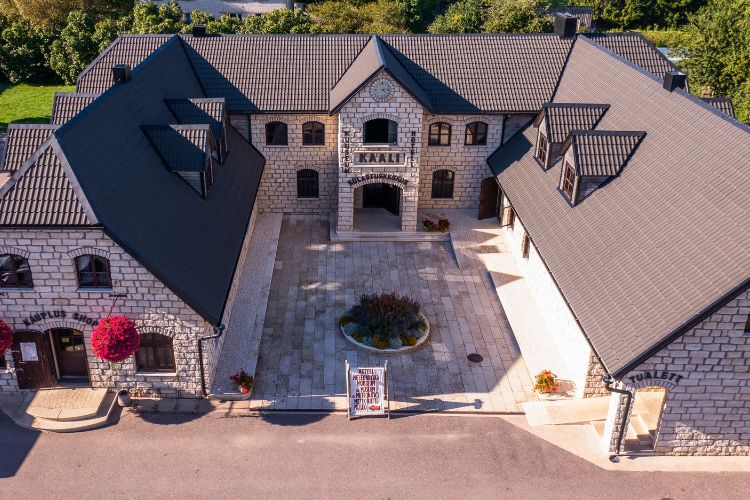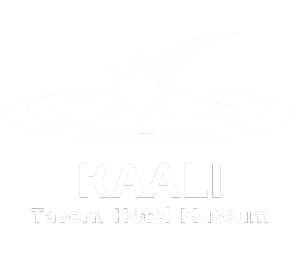The First Scientifically Proven Meteorite Crater in Europe
Did you know that the first scientifically proven meteorite craters in Europe are located in Estonia? There are approximately 400 times more meteorite craters per unit area than the Earth’s average. Saaremaa Island is home to Estonia’s largest natural wonder, the Kaali crater, whose meteoritic origin was first proven in Europe and second in the world, after the Arizona craters in the USA. And did you know that there are actually nine meteorite craters in Kaali?
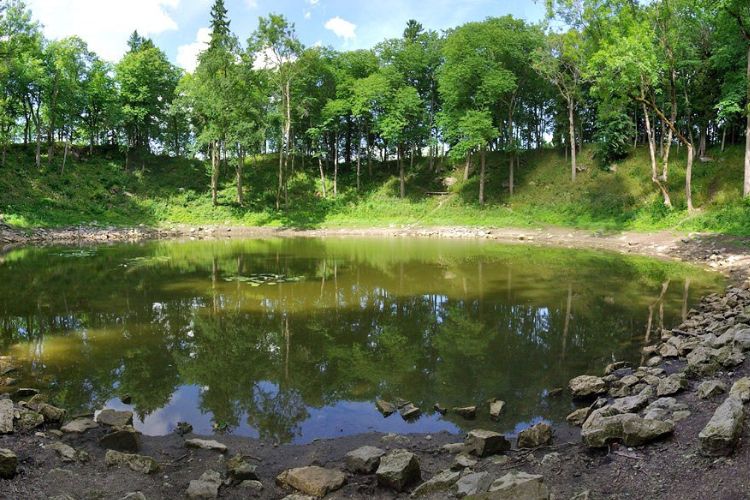
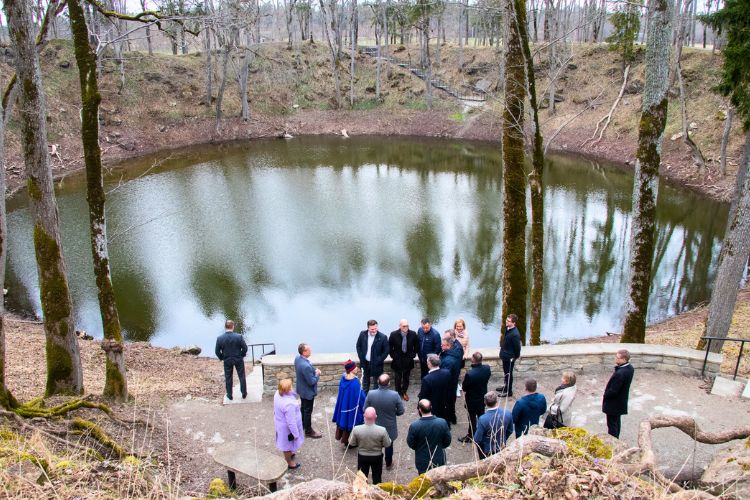
7500-7600 Years Ago
The approximate time of the Kaali meteorite impact is 7500-7600 years ago. The meteorite’s impact on the already inhabited Saaremaa caused significant destruction and has been compared to a small nuclear bomb explosion. The meteorite disintegrated at an altitude of 5-10 km and fell to the Earth’s surface in fragments, with the largest creating a crater with a diameter of 110 meters and a depth of 22 meters, along with 8 smaller craters.
From Ancient Times to the 20th Century
The Kaali crater was a sacred cult site for ancient people, surrounded by a 3-meter-wide stone wall. Abundant animal bones found at the edge of the wall suggest that it was a place of sacrifice.
Between 1827 and 1928, there were various theories about the origin of the craters, including an explanation that the crater was formed by an “underground fire explosion.” In 1854, it was believed to be an ancient fortress encircling a natural lake.
In 1937, mining engineer I. Reinwald proved the meteoritic origin of the Kaali craters. An analysis of found iron fragments showed that the meteorite represents the most common type of iron meteorite – coarse octahedrite.

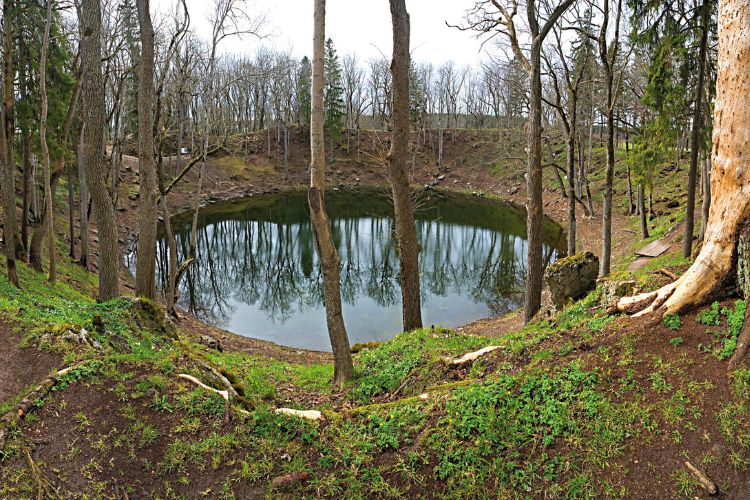
Meteorite Formation
The meteorite craters in the Kaali area represent a moraine plain, with a thickness of about one meter of clayey ground moraine near the main crater.
When a meteorite collides with the Earth’s surface, the shockwave shatters the rocks, creating an explosion crater with melted rocks forming rims around the edges. The mass of the meteorite that created the craters could have been between 20-80 tons, and the impact velocity with the Earth’s surface was 10-20 km/s.
The main crater is nearly circular in plan, with a diameter of 105 – 110 meters from the rim and an average depth of 22 meters.
Kaali Crater in Mythology
Estonian President Lennart Meri, in his book “Hõbevalge,” considers the Kaali catastrophe as the epicenter of Nordic folklore. The Finnish national epic “Kalevala” indeed contains a plausible description of the fall of celestial fire.
In the 7th century, Vergilius wrote the myth of Phaeton, the son of the Greek Sun, who fell from the sky with flaming hair like a star, leaving behind a small lake-like deep grave. The connection to Kaali may not be just an imagination since the catastrophe could have had a far-reaching impact.
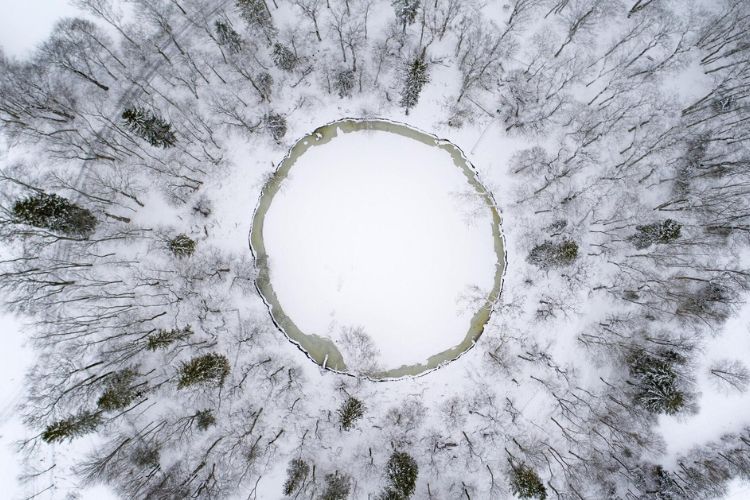

1842
The scheme of the courtyard of Kaali (Salla) manor and the main crater, created by F. Kruse, the history professor at the University of Tartu (1842).
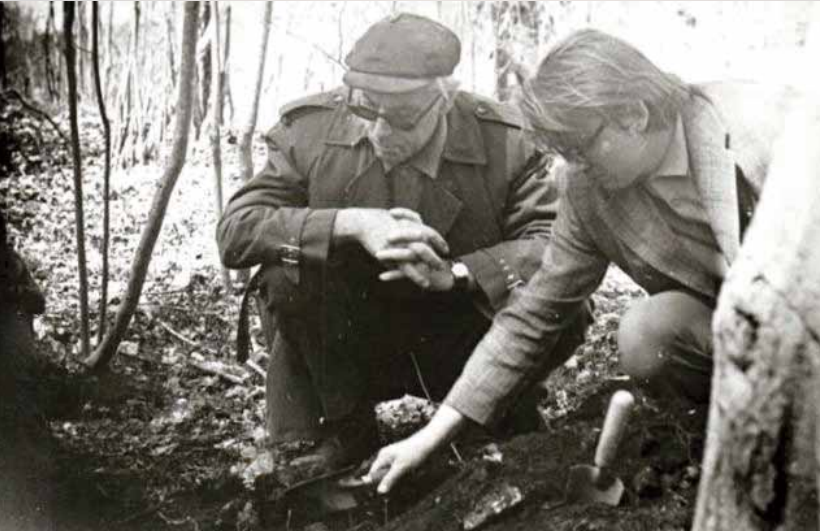
1976
The first archaeological excavations took place in Kaali in 1976, led by archaeologist V. Lõugas, pictured with Lennart Meri (left).
.
Kaali Crater in the 21st Century
In the late 20th century, the Kaali crater was left unattended, and its shores were overgrown with bushes.
In 2006, Alver Sagur, the owner of KAALI Tavern, took on the task of cleaning the crater. The shores of the crater were cleared of bushes, and decades of accumulated waste were removed from the crater’s bottom. A viewing platform was built on the slope of the crater, and a dolomite staircase now leads down. Today, more than 100,000 visitors from around the world visit the KAALI crater each year. A spacious parking lot and restrooms have been provided for visitors. There is also the KAALI Tavern and hotel, and the Meteoritics and Limestone Museum is open as well.
